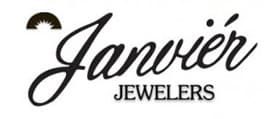One of the most frequently asked questions by customers is, “How can I read a diamond grading report?” View the video and transcript below from the Gemological Institute of America to help you become an expert in selecting the perfect diamond!
“A public benefit, independent institute established in 1931, GIA is the leading source of knowledge, standards and education in gems and jewelry.
As the creator of the 4Cs and the International Diamond Grading System, GIA maintains the methods and best practices for evaluating and describing diamond quality. Today, virtually everyone in the international diamond industry uses these methods for evaluating and comparing diamonds.
A grading report from GIA is more than a collection of observations about a gem. It represents an accurate, unbiased, comprehensive scientific investigation.
Now, let’s review the main components of a GIA grading report. Each diamond is assigned a unique report number, which you can use to look up your report online.
The weight of a diamond is measured in carats. GIA reports diamond carat weight to the nearest hundredth of a carat.
The GIA Color Grading System describes the diamond’s lack of color ranging from D, which is colorless, to Z, which is light yellow or brown.
Diamond clarity evaluates the number, size, relief, nature and position of internal inclusions and surface blemishes. GIA assigns one of 11 clarity grades ranging from flawless to included and lists the most prominent clarity characteristics.
On some report formats, clarity characteristics are shown as a plotted diagram, marking significant or identifying characteristics, a key, list of relevant symbols, and their definitions.
For the standard round brilliant diamond, GIA assigns a cut grade ranging from “Excellent” to “Poor,” taking into account seven components — polish, symmetry, weight ratio, durability, brightness, fire and scintillation.
The diamond’s dimensions are thoroughly described from its shape and cutting style, to its precise measurements. A diagram shows the diamond’s profile and its proportions. A description of fluorescence is provided as an additional identifying characteristic.
GIA tests every diamond to verify that it is natural and to identify any processes that may have been used to alter its color or clarity. An asterisk next to the color or clarity grade indicates the diamond has been treated.
Treatments and additional identifying characteristics are described in the comments section. If the diamond is inscribed, the inscription will be noted on the report as well.
A GIA grading report has a number of sophisticated security features, designed to ensure its authenticity and integrity. GIA offers a variety of diamond reports, among them, the Diamond eReport, an interactive online option available only for natural, untreated diamonds.
GIA operates under strict standard procedures and principles designed to ensure objectivity and accuracy, no matter which report you receive.
To learn more, visit the GIA website, and be sure to ask your jeweler for a GIA graded diamond.”
At Janvier Jewelers, our diamonds are personally hand picked by the finest diamond cutters in the world, and then are certified at GIA or EGL USA laboratories. Visit our store today and let one of our diamond experts guide you in selecting the perfect diamond that is tailored to your needs. Feel free to call us at (302) 366-7448 or fill out our contact form with any questions that you may have!

